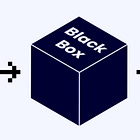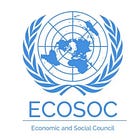The Emergency Condition
The economic conditioning system described in the two previous essays requires an enforcement mechanism. What happens when nations, companies, or individuals resist the computer-generated behavioral demands?
The answer lies in international emergency powers that can override national sovereignty and democratic decision-making — all triggered by the same algorithmic predictions.
The UN Emergency Platform
The UN Emergency Platform (currently under development) represents what officials describe as a ‘complex scenario protocol’ — a fitting euphemism for a system designed to activate predetermined responses based on ‘black box’ algorithmic assessments. The Platform creates a streamlined pathway from computer predictions to global emergency powers.
The mechanism operates through a clear sequence:
Step 1: Computer models analysing climate data, biodiversity metrics, social conditions, or disease surveillance flag elevated ‘pandemic potential’ in a region or globally. These black box algorithms generate risk assessments that officials present as objective scientific determinations.
Step 2: The UN Secretary-General, citing these algorithmic assessments, declares a global emergency through the Emergency Platform. The declaration doesn't require an actual crisis — only computer predictions that one might occur.
Step 3: The UN Security Council, operating under expanded interpretations of international law, could authorise coordinated response measures — potentially including economic sanctions or military intervention against countries that refuse to comply with recommended emergency measures.
The Platform transforms computer predictions about potential future problems into immediate international authority over national governments. The ‘complex scenario protocol’ language obscures what is essentially an automated trigger system for global emergency governance.
Unlike traditional emergency declarations that respond to observable crises, this system activates based on computational assessments of what might happen. The algorithmic predictions become sufficient justification for real-world emergency powers, economic restrictions, and international intervention.
Expanding Legal Authority
The legal foundation for this system builds on existing frameworks that are actively being expanded. The Responsibility to Protect (R2P) doctrine currently applies to preventing mass atrocities including genocide, war crimes, ethnic cleansing, and crimes against humanity. However, international legal definitions undergo regular expansion through ‘minor’ adjustments.
The 2014 Ebola crisis already established precedent for treating health emergencies as security threats when UN Security Council Resolution 2177 declared that ‘the unprecedented extent of the Ebola outbreak in Africa constitutes a threat to international peace and security’ — the first time a health crisis received this designation.
Extending R2P to cover pandemic emergencies requires only another definitional adjustment — reframing failure to implement recommended pandemic measures as potentially constituting crimes against humanity through deliberate endangerment of populations. This expansion isn't theoretical speculation; it's being actively advocated in academic journals and policy circles, with scholars explicitly calling for expanded R2P to cover health emergencies and ‘international oversight over internal public health standards’.
The push for ‘ecocide’ legislation provides an additional pathway. UN Secretary-General Antonio Guterres has stated it is ‘highly desirable’ to include ecocide as a crime at the International Criminal Court. Since climate change and environmental degradation are defined as pandemic risk factors under One Health frameworks, environmental crimes could be linked to ‘crimes against humanity through endangerment of global health security’.
Multiple advocacy tracks — pandemic preparedness, ecocide legislation, R2P expansion — converge on the same outcome: expanding international criminal law and emergency powers to cover algorithmic predictions of pandemic potential.
Removing the Last Safeguard
Currently, the UN Security Council's five permanent members (US, Russia, China, UK, France) retain veto power over resolutions, including those authorising the use of force. This means any of these nations could block emergency interventions based on pandemic modeling, even if a majority supports action.
However, there are growing efforts to eliminate or restrict the veto system. The One World Trust's Charter 99 initiative explicitly calls for removing veto power to make the UN more ‘effective’. This sentiment traces back decades — the Baha'i International Community submitted comments to the UN as early as 1955 advocating for eliminating veto powers that could obstruct collective action.
Current reform proposals include various mechanisms to bypass or override vetoes, especially for ‘humanitarian’ emergencies. If implemented, these changes would remove the primary structural brake on Security Council action, making it much easier to authorise emergency interventions based on algorithmic pandemic risk assessments.
Without veto protections, algorithmic emergency declarations could readily trigger international interventions, including economic sanctions and military action, against any nation whose policies computer models determine create unacceptable pandemic potential. The removal of vetoes would eliminate the last institutional mechanism capable of blocking algorithmically-triggered international intervention.
The System in Action
To understand how these mechanisms would work in practice, consider this plausible scenario:
Computer models analysing economic inequality, environmental data, and social media sentiment in several Latin American countries generate elevated ‘pandemic potential’ scores. The algorithms flag increased deforestation rates, rising poverty levels, and social unrest as creating conditions that could amplify disease transmission and reduce pandemic preparedness capacity.
The UN Secretary-General, citing these algorithmic assessments as representing ‘the best available science’, declares a regional health emergency through the Emergency Platform. The declaration emphasizes the urgent threat to global health security and the moral obligation to protect vulnerable populations from potential pandemic catastrophe.
The Security Council, operating under expanded R2P provisions covering health emergencies, authorizes coordinated international response. With Security Council vetoes eliminated through recent ‘reforms’, no major power can block the intervention. The authorisation includes economic sanctions against non-compliant governments and potential military support for ‘humanitarian’ operations.
Central banks immediately implement the economic conditioning framework established through the system previously described. Countries face restricted access to international financing, higher borrowing costs, and exclusion from global payment systems until they implement algorithmic recommendations. Corporations operating in affected regions encounter reduced access to capital markets and supply chain restrictions. Individuals find their digital payment capabilities limited, with CBDC systems restricting transactions outside approved parameters.
The affected governments protest that no actual health emergency exists, that their democratic processes should determine domestic policy, and that the computer models used flawed assumptions. However, questioning the algorithmic assessments is characterized as ‘anti-science’ denialism that ‘threatens global security’. Resistance is reframed as moral failure — endangering not just local populations but humanity itself.
International media coverage emphasizes the scientific consensus supporting intervention and the ethical imperative to protect vulnerable populations from pandemic risk. Civil society organizations funded through the conditional financing system amplify calls for compliance with international recommendations.
The economic pressure proves decisive. As financing costs rise, supply chains break, and individual economic participation becomes restricted, domestic pressure mounts for compliance with algorithmic recommendations. Governments that initially resisted find themselves politically and economically isolated, facing internal pressure to accept external oversight of their health, environmental, and social policies.
The intervention succeeds without requiring significant military force. Economic conditioning provides sufficient leverage to compel compliance with algorithmically-determined behavioral standards. The precedent established makes future interventions easier to justify and implement.
The Elimination of Resistance
This scenario demonstrates how the combination of algorithmic predictions, international emergency powers, and economic conditioning creates a system where effective resistance becomes nearly impossible. The framework eliminates potential sources of opposition through multiple mechanisms:
Democratic resistance is overridden by international emergency authority that claims scientific and moral superiority over local political processes.
National sovereignty is bypassed through expanded interpretations of international law that prioritize global health security over domestic autonomy.
Major power resistance is eliminated through Security Council veto removal, preventing powerful nations from blocking interventions.
Economic resistance becomes unsustainable through coordinated financial pressure that makes non-compliance economically devastating.
Intellectual resistance is marginalized through science-to-ethics framing that characterizes questioning as anti-scientific and immoral.
The result is a system where algorithmic predictions about potential future problems can trigger real-world emergency powers, economic restrictions, and international intervention that no democratic process, national government, or institutional safeguard can effectively resist.
When combined with the behavioral conditioning mechanisms described in Essay 1, this creates comprehensive infrastructure for algorithmic governance that operates through both economic incentives and emergency override authority. The technical capabilities exist, the legal frameworks are being expanded, and the institutional safeguards are being systematically removed.
Understanding how emergency governance integrates with economic conditioning reveals the complete architecture of the system currently under development — one where computer algorithms could effectively govern human societies through a combination of economic pressure and unstoppable international authority.










It is evermore clear that distraction and confusion is the ongoing strategy of the psycho-narcissists who believe in their right to control mankind and our planet.
We need to ''turn away from the black witch'' and re-focus our God-given LifeForce Intelligence as the real 'living infrastructure''.
All said and done, we have all the skills, time and knowledge; which produces all supply and demand. So why obey the most deluded freaks on the planet?!
Humanity should wake up to the fact that centralization is the real evil.
Everything else is designed to protect the draining of resources by the fiat money scam.